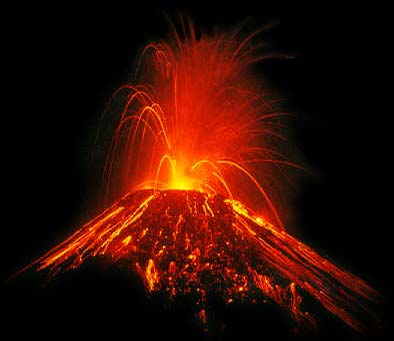About Our Project
Motivation

The ability to predict volcanic eruptions has been a major area of study within volcanology for centuries. Historically, volcanic eruptions have created major humanitarian crises by causing large-scale losses of property and lives. In addition, large scale volcanic eruptions have the ability to effect global climate by adding large amounts of chemicals such as SO2 and CO2 into the atmosphere. For these reasons, it is important to understand the inner workings of volcanoes and what sort of processes effect their eruptions rates.
Related Work
While researching this topic we came across a variety of papers which discussed the seasonality of volcanic eruptions. Many people have shown that single volcanoes or subsets of volcanoes erupt more frequently during certain times of years than others [e.g. Sottilli and Palladino 2014]. One particular paper looked at volcanoes globally [Mason et al. 2004], and showed that there is a correlation between volcanic eruptions and eruption month. Although the researchers demonstrate that the seasonal fluctuations in eruptions correlate to hydrological cycles in certain regions (i.e. changes in water levels), they did not show the relationship between volcanic activity and tidal gravitational forcings that induce surface deformations on the earth (See Below: What are Solid Earth Tides?). In addition, their findings made us curious as to why differences in seasonal patterns existed between regions.
Goal
We seek to understand how various cyclical forces (also known as tidal forces) affect the rate of volcanic occurrences as well as the features of volcanoes that affect their susceptibility to these naturally occurring forces. Various studies have shown that volcanic eruptions follow a seasonal fluctuating pattern and that they seem to coincide with the solid earth deformations that occur from gravitational forces that have the most influence on Earth.
We hypothesize that there is a correlation between solid earth tides and global volcanic eruptions and that the relationship causes differences in volcanic activity throughout various regions in the world. For that reason, we seek to improve our understanding of the role that tidal forces play in global tectonic activity in order to predict the incidence of future volcanic activity.
Research Questions
- Do volcanic eruptions exhibit seasonal patterns?
- How well can we predict the phase at which a volcano will erupt based on volcanic and eruptive features?
- What specific volcano attributes cause a volcano to be more susceptible to tidal forces? For instance, it is possible that a volcano that lies on the oceanic crust may be more susceptible to seasonal forces than one that lies on the continental crust.
- Which tidal force correlates the strongest with volcanic eruptions?
What Are Solid Earth Tides?
Similar to the oceans which respond to gravitational forces exerted by the moon and sun, the solid earth also deforms in response to these forces. Tidal forces are caused by celestial bodies, specifically the sun and the moon, as well as changes in the Earth's tilt and rotation. The combination of these forces can lead to movement in the crust on the meter scale. By changing the force exerted a specific location, volcanic processes might be greatly affected. For instance, less pressure may lead to gases exsolving from a magma within the Earth causing it to erupt. Alternatively, decreasing pressure may allow for more faults to be created which magma can travel through and erupt. The periodicity of these forces ranges from 3 times daily to 18 years. The most well-known tidal force is the semi-diurnal (twice daily) tide of the moon which causes high and low tide at the beach.